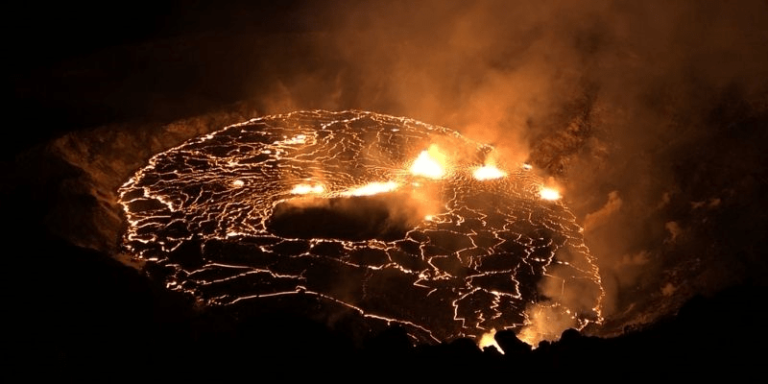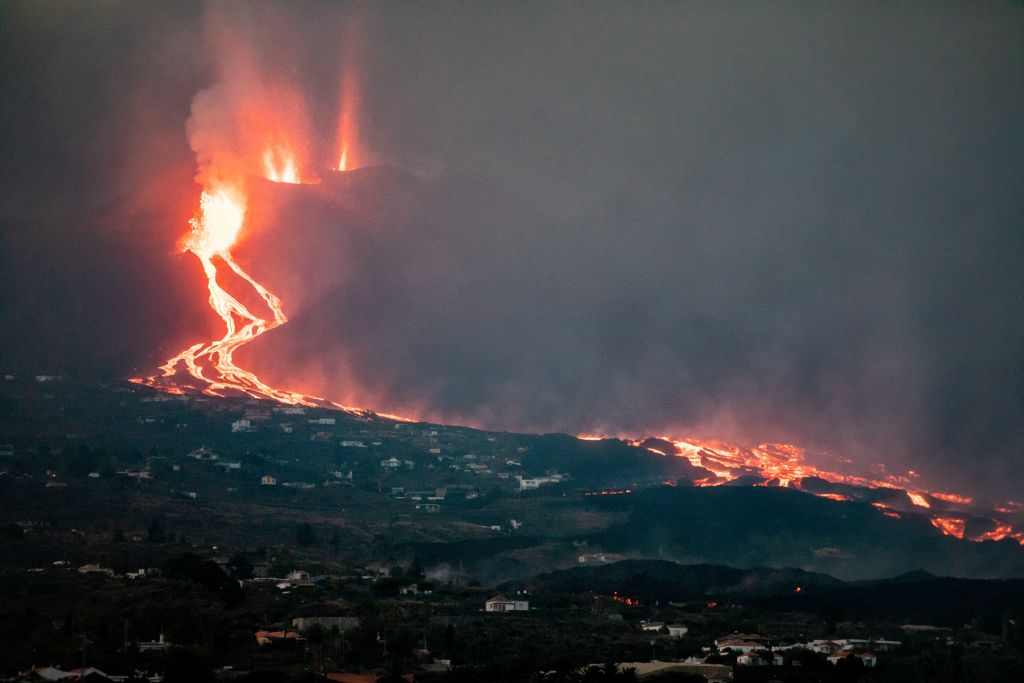Eruptions at La Palma and Kilauea Volcanoes
From spectacle to disaster, two active volcanic regions demonstrate the drama of nature.
By: Laura Valkovic | October 1, 2021 | 593 Words

Kilauea crater (USGS image by B. Carr)
Volcanoes are some of nature’s most dramatic landmarks. Recently, volcanic eruptions have been gaining attention on islands around the world.
Kilauea
Hawaii’s Kilauea volcano is one of the most active in the world. Now, it’s erupting – but luckily the lava has stayed in just a small area, within the crater.
According to the U.S. Geological Survey, the eruption began near the volcano’s summit, in its Halemaʻumaʻu crater. Cracks at the base of the crater caused lava to flow out onto “the surface crust of the old lava lake that was active until May 2021.”
The Hawaiian Islands were formed by volcanoes, and the area is still known for its volcanic activity – Kilauea is in the Volcanoes National Park. In 2018, Kilauea had a huge eruption, with thousands of earthquakes. The lava covered over 30 square miles of Hawaii’s Big Island, and, in some places, it was 79 feet thick. Luckily, the current eruption is much smaller, with lava covering about six feet of just the crater floor. Also, lava fountains have appeared, rising to the “height of a 5-story building.”
Rather than running away, people are traveling to see the eruption. The area is not near hiking trails, roads, or homes, but the terrain can be dangerous, so visitors have been asked to be careful.
Cumbre Vieja
Meanwhile, the Canary Islands are experiencing a much bigger and more dangerous event. In late September, a volcano erupted on the island of La Palma – and it could go on for weeks. The eruption is located in the Cumbre Vieja natural park, a volcanic mountain area.

The island was recently hit with many small earthquakes, and the activity opened cracks (or vents) in the volcano, causing an eruption. Lava, smoke, and ash were thrown into the air before lava rivers began flowing out of the vents. Explosions were also detected on the side of the mountain.
Thousands of people in the local area have been evacuated due to the dangerous conditions, and others have been told to stay at home due to the poisonous gases. As well as the ash and toxic fumes, lava flow has destroyed over 800 buildings, as well as roads and banana plantations. The molten rock soon reached the ocean, where it will eventually cool and solidify, adding many acres of land to the island’s coastline.

Volcano in La Palma (Photo By Kike Rincon/Europa Press via Getty Images)
Officials now say that two new lava flows have come out of a third vent. That means lava is flowing out of four places – three vents and the crater of the volcano. “We have the biggest tragedy ahead of us, more people we have to help,” said Mariano Hernández Zapata, the president of the island’s council. “We are worried about the course this new flow of lava could follow, although we hope that it will join the other.”
While volcanic eruptions like this cause devastation in the short-term, they can be a benefit for the future. As reported by The Guardian, experts say the molten rock could end up “bringing minerals from the Earth’s core to the surface and providing a habitat both underwater and on land” for wildlife.
Like Hawaii, the Canary Islands are volcanic, and the Cumbre Vieja area has erupted before, most recently in 1971. La Palma has been declared a natural disaster zone – but, luckily, no one has been killed or injured due to the event so far.
















